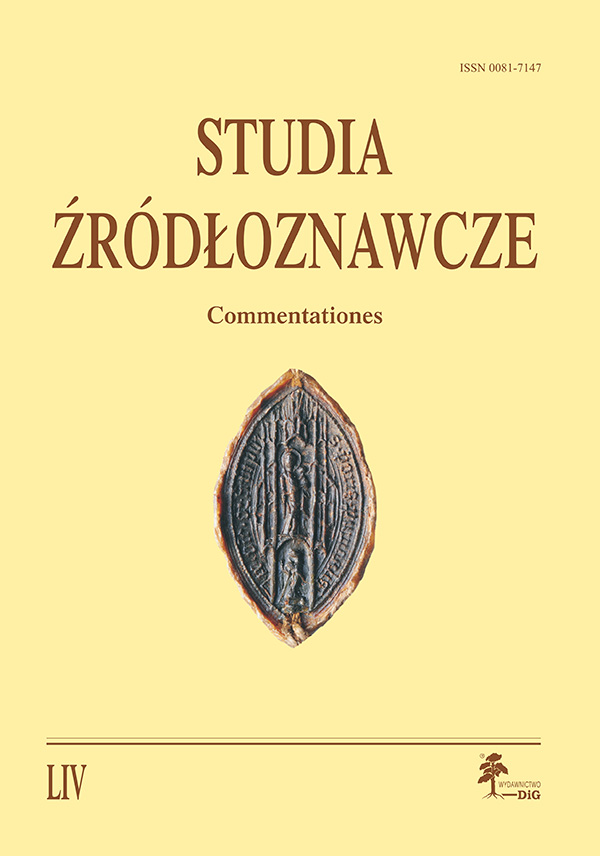Die Handschrift des Stadtschreibers Heinrich Polan als Beispiel der Verwendung der neugotischen Schrift in der Kanzlei der mährischen Stadt Olmütz
The handwriting of the town scribe Heinrich Polan as the application of the German neo-Gothic style in the office of the Moravian city Olomouc
Author(s): Bohdan KaňákSubject(s): History, Cultural history, Modern Age, South Slavic Languages, 16th Century, 17th Century
Published by: Instytut Historii im. Tadeusza Manteuffla Polskiej Akademii Nauk
Keywords: Paleography of the early Modern Times; neo-Gothic handwriting; paleographical analysis; Olomouc; Olműtz; Silesia; city scribe;
Summary/Abstract: Among the Olomouc city scribes from the period from the late thirties to early fifties of the 16th century stands the writer Heinrich Polan out for its distinctive script. Our study is devoted to the written expression of this man. He belonged to the generation of Olomouc scribes with a clear form of the German neoGothic handwriting, that is already characterized by remarkable bond angle. Notably, this feature of the dominant angular bond joins Polans manuscript with the work of the Nuremberg Writing Master Johann Neudörffer Senior. This article deals with the paleographical comparative model analysis of the manuscripts both of these personalities. Based on this analysis, we can conclude, that in the handwriting of Henry Polan and in the pattern of letters Johann Neudörffer there are a number of similarities outweighing the differences in the alignment of the pen strokes. Heinrich Polan was a Pole, who was born in Danzig, after which he spent many years in the Silesian Nisa. Polan’s example shows a possible way of transferring advanced neo-Gothic manuscript forms from Silesia to Moravia and serves as a subject for further paleogeographical research on the topic spread of German neoGothic handwriting between these areas, which have not yet been processed. The core of this case study consists in comparing the selected handwriting with the script of the contemporary textbook of the Nuremberg scribal school to determine their differences and compliance. However, it may become a small stone in the mosaic of extensive research and a starting point for further investigations, which first examines the methods and options paleographic analysis in resolving the issue.
Journal: Studia Źródłoznawcze. Commentationes
- Issue Year: 2016
- Issue No: 54
- Page Range: 85-114
- Page Count: 30
- Language: German

